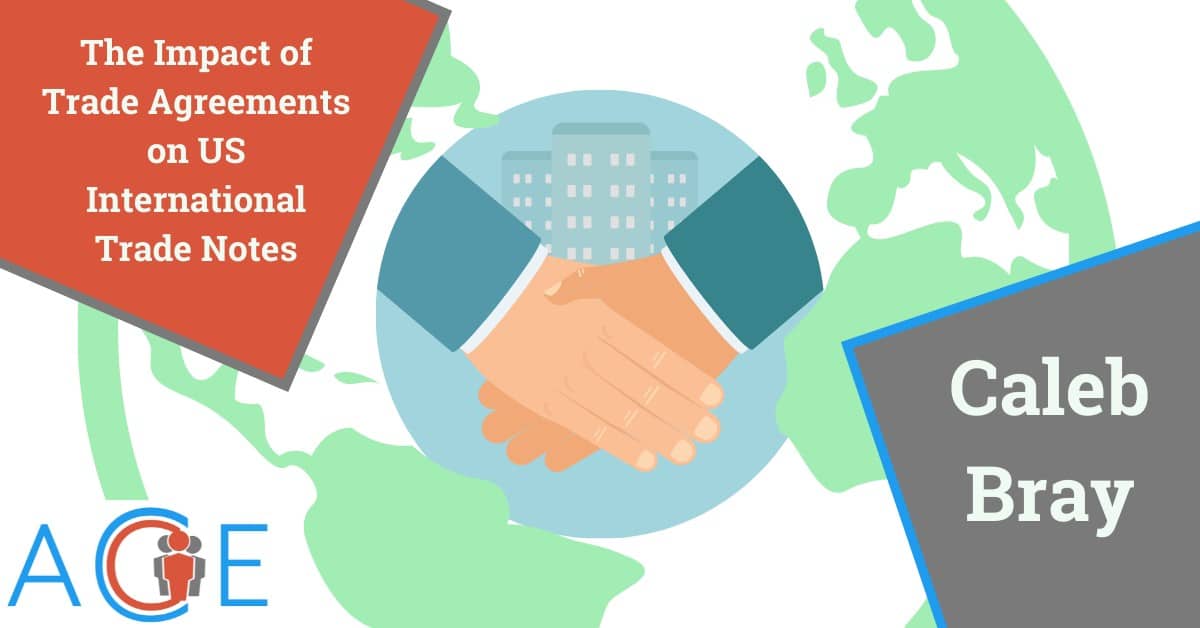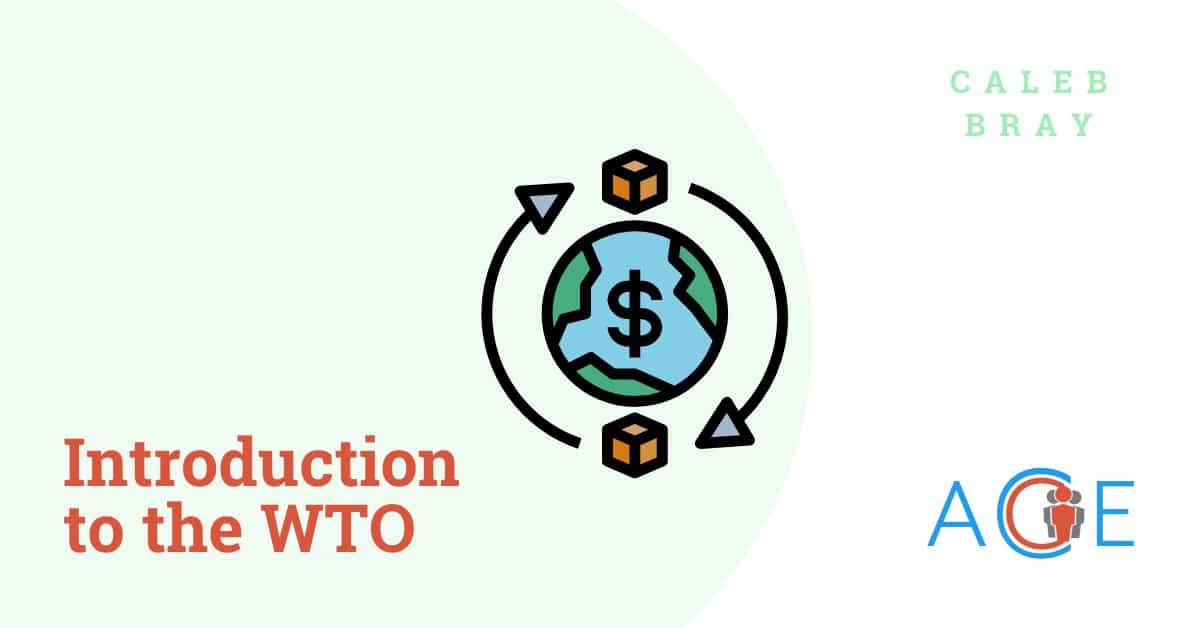Introduction to Free Trade and Comparative Advantage
Because of the economic principle of comparative advantage, free trade between countries is typically beneficial for all parties involved. One nation has a comparative advantage over another if it is able to carry out economic activity in a specific field at a lower opportunity cost in comparison to another country. For example, if country A can produce either 100 loaves of bread or 400 t-shirts in an hour, while country B can produce either 200 loaves of bread or 300 t-shirts in an hour, country B has a comparative advantage in the production of bread while country A has a comparative advantage in the production of t-shirts. In this scenario, and oftentimes in the real world, trade between country A and country B is mutually beneficial as country B can specialize in the production of bread, country A can specialize in the production of t-shirts, and they can each trade the good they produce for the other good that they do not.
Methods for Industry Protection
Sometimes free trade runs counter to a nation’s economic or political goals, like when an industry in one country is out-competed by an industry abroad. In these instances, the home country of the struggling industry may take a variety of actions to try to maintain their stake in the industry, such as:
- Applying a tariff, a common trade restriction. Tariffs are taxes that are placed on certain imports on a product from another country, which typically increase the price of the good in markets in the importing country, encouraging consumers to buy products domestically rather than abroad.
- Applying a quota, or placing a restriction on the quantity of goods that are imported. This limits the supply of the good and can increase the cost of making the product within the exporting country.
- Providing home industries with subsidies, or monetary assistance. Rather than taking action against another country’s goods, the importing country can assist their industries by using government money to cover a portion of the cost of production. Subsidies can decrease the cost of supplies for the production of goods and thus allow the struggling industries to sell their goods at a lower price and still remain profitable.
Trade Agreements
Leaning too heavily on these protectionist measures can often escalate to countries using increasingly harsh trade restrictions, crippling foreign economies and decreasing economic efficiency. In order to avoid this outcome, countries will often establish trade agreements which outline rules of international trade that all members can agree upon and allow for fair competition. Established by the United Nations in 1947, the General Agreement on Tariffs and Trade (GATT) is an example of such an agreement. To resolve internal issues regarding dispute resolution, the GATT was replaced by a trade governing body known as the World Trade Organization (WTO) in 1995. The formal organization structure of the WTO and its amended rules were largely viewed as an improvement over the GATT. Currently the WTO consists of 164 member states, including the United States, meaning that it governs the vast majority of international trade.
The United States is also involved in numerous trade agreements with specific countries. The US establishes many Free Trade Agreements (FTAs) or Trade Promotion Agreements (TPAs) which allow for the free flow of trade between nations with minimal restrictions. In many of these agreements the US maintains a significant trade surplus, meaning that the US exports more to the other nation than it imports from them. Even in trade agreements where the US has a trade deficit, importing more than it exports, the US still gains valuable commodities and foreign investment in the economy. For example, in the US-South Korea FTA, the US has a trade deficit of $7.6 billion, but the volume of trade is valuable. The US exports $56.5 billion worth of goods while importing $77.5 billion. This trade agreement also creates about 358,000 jobs in the US economy. It is important to remember in these examples that trade is not a “zero-sum” game where the more you export the better. Imports can provide lower prices for consumers, greater variety, and an influx of materials necessary for the production of other goods.
Another type of trade agreement the US establishes with other countries are Trade and Investment Framework Agreements (TIFAs). These agreements outline the framework for future discussions on trade and investment between the two countries. These agreements allow for annual council meetings between the countries involved to negotiate on a wide range of trade issues without the agreement setting any explicit trade rules. The US also partakes in many Bilateral Investment Treaties (BITs) with countries where investor rights are not already protected through other trade agreements. These treaties are designed to encourage the countries involved to adopt free-market policies that allow for more open investment by private companies.
BITs require that those who sign onto the agreement:
- Treat US investments as favorably as domestic investments.
- Have clear limits on foreign governments claiming investments (including repayment for any investments that are seized)
- Don’t use performance requirements for operating an investment
- Allow investors to work with the top managerial personnel of their choice when negotiating an investment.
Most importantly, BITs allow for investors of either party to advocate for their rights by submitting an investment dispute with the government of the other party to be settled by an international court.
NAFTA and US Trade
One of the most important US trade agreements in the last decades has been the North American Free Trade Agreement (NAFTA). NAFTA facilitated a large increase in goods trade between the US, Canada, and Mexico. In NAFTA’s first ten years, trade in goods increased from $293 billion in 1993 to $627 billion in 2003. By 2016, this value had increased to nearly $800 billion. Created in 1994, NAFTA was the world’s largest free trade agreement until it was replaced in March of 2020. Due to the Trump administration perceiving a disadvantage in America’s production of different industries relative to Mexico and Canada, namely in agriculture and automobile production, the United States-Mexico-Canada Agreement (USMCA) was established. Most concerning to the Trump Administration were trade deficits of $101 billion to Mexico and $27 billion to Canada as of 2019. The USMCA introduced several rule changes to automobile manufacturing, labor standards, the Canadian dairy and wine market, intellectual property, pharmaceuticals, and dispute resolution. This agreement went into effect on July 1, 2020. As of June 2021, the US trade deficit with Mexico has decreased to $52.9 billion and the trade deficit with Canada has decreased to $19.4 billion.


